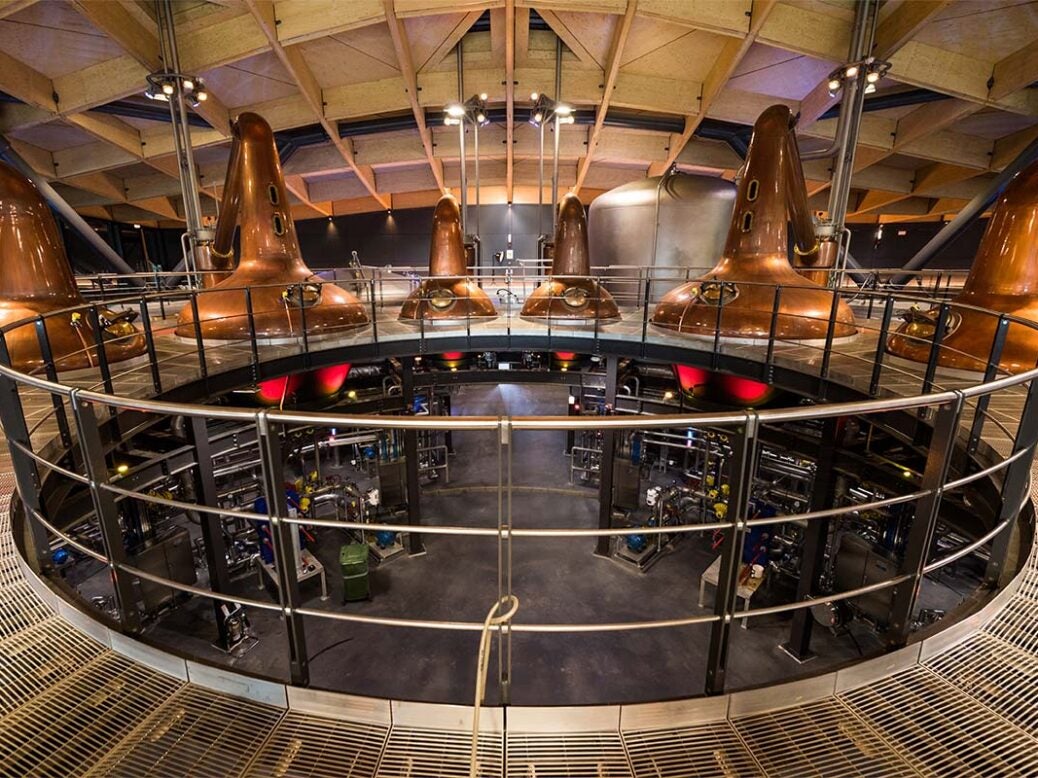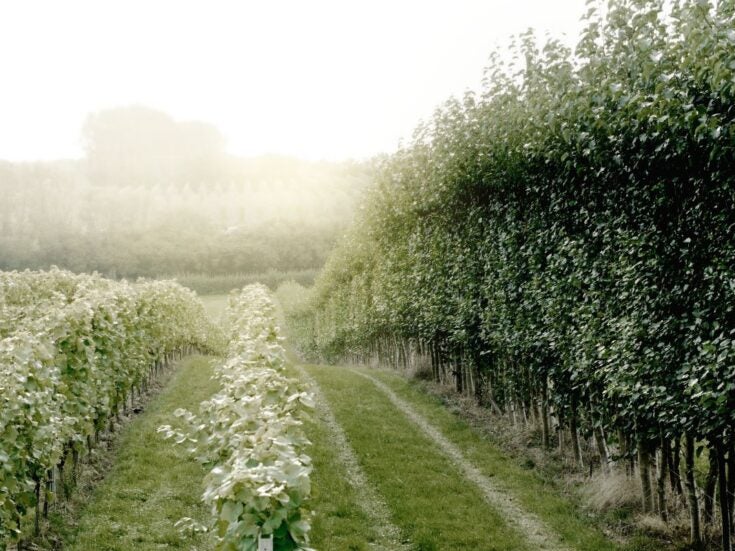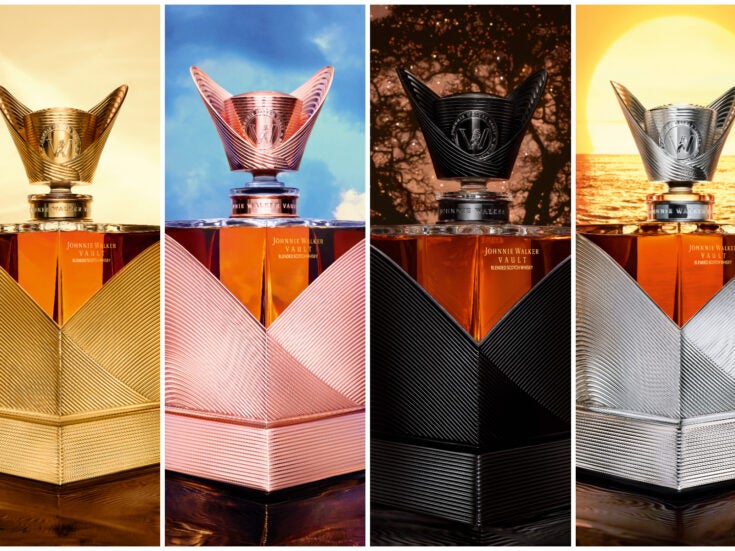
In 2024, two of the the Big Three single-malt Scotch distilleries are celebrating their 200th anniversaries: the Macallan and the Glenlivet. To mark the occasion, each is releasing its oldest ever whisky. A few other distilleries without definite articles are two centuries old too, including Mortlach and Fettercairn. But, readers might wonder, why this glut of temporal milestones?
[See also: One of a kind: Inside McLaren’s ultra-exclusive world of bespoke supercars]
The year 1824 marked the beginning of a wave of distillery openings that established many of the single-malt brands we know today. The story actually began two years earlier, when, after a sustained period of Jacobite and radical unrest in Scotland, George IV became the first British monarch to venture north of the border in more than a century. To endear himself to the locals, he wore a kilt and drank illicit Glenlivet whisky, offered to him by the novelist Sir Walter Scott. According to the story, he liked it so much that he ordered Parliament to legalise it.
As it often the case, the truth is a little more nuanced than the legend. The rapprochement with Scotland certainly influenced the 1823 Excise Act, but this didn’t actually legitimise a previously banned spirit. It was legal to distil whisky before 1823, albeit with a punitive tax if you wanted to make it with malted barley. To turn a profit, there were two choices: either make a cheap spirit from other grains and vegetable matter, or make a good malt whisky and evade the tax. In the Lowlands and Central Belt, easily accessed by the excisemen, the former was preferred; in the remote Highlands and Islands – places like the Livet glen, with hard-to-find nooks and smugglers’ paths – they preferred to make the good (illicit) stuff and hope they didn’t get caught. Unsurprisingly, the epicurean denizens of cities such as Edinburgh preferred the taste of the latter.
If this sounds romantic, there’s a flip side. Whisky historian Arthur Motley, MD of Royal Mile Whiskies, points out: ‘It was chaotic and, at times, violent. Distribution was controlled by violent criminal gangs. The government had effectively lost control and they were worried about it.’
The 1823 Act is regarded as one of the most well-thought-out pieces of legislation in British history. It standardised taxes across Scotland (removing regional tax zones that encouraged smuggling). It reduced duty on malted barley, which suited Highland farmers, who could sell their crop to a newly enlarged market or distil it legally. It also meant duty was paid upon the sale of whisky, rather than on the filling of a flask. This incentivised warehousing, which helped to develop the oak-aged drink we know today.
[See also: Best whisky advisers for collectors and connoisseurs in 2024]
The licence was £10 a year (roughly the value of one barrel of whisky), with an additional fee for each gallon sold. But the largest cost distillers faced was in setting up their facilities the way the Act prescribed; the fine for failure was £200, along with the withdrawal of the licence. So the 1823 Excise Act was as much a regulation and standards document as a tax schedule; the wording that’s used today to define how Scotch whisky must be made is almost exactly the same.
That’s the reason the first licences were issued in 1824 – it took some time to set it all up properly.
George Smith, a farmer (and almost certainly a former illicit distiller) from Ballindalloch in the Livet valley, is generally recognised as the first Highland distiller to be issued a licence. Savvy about brand awareness, he was quick to register his whisky as ‘The Glenlivet’. Several neighbourhood rivals were unhappy with Smith, who frequently had to fire pistols from his window to ward off would-be saboteurs looking to burn down his distillery. It wasn’t just the marketing strategy that put noses out of joint; there was opposition to the very existence of licences and those who went along with the new regime. This was because the formalisation and professionalisation of the north of Scotland’s whisky industry brought about a sort of class war. Many small-time distillers who had previously been content with the status quo of low-level smuggling that was tolerated couldn’t afford the £10 fee required to stay on the right side of the newly tightened laws.
What emerged was a middle class of either landowner (such as Smith) or tenant farmer (such as Alexander Reid) with experience in distilling high-quality whisky. Reid had a long-term lease on the Elchies Estate, Craigellachie, on a hill called Macallan. He also received a licence in 1824 to distil… no, not ‘Macallan’. but Elchies Distillery Glenlivet whisky (the brand we know today evolved a little later).
It’s often claimed, inaccurately, that Glenfiddich (the third of the Big Three) released the first single malt in 1963. While blends dominated until the latter part of the last century, there was single malt earlier than this – often released from the distillery door. But the swinging Sixties was when the category started to build the momentum that would see it really take off in the Eighties.
[See also: Will a 100-year-old whisky soon be on the menu?]
When that happened, the Macallan was in prime position to ride the wave and become a byword for high-end whisky. It’s not clear whether the distillery’s extensive stock of long-aged inventory had been accrued through luck or judgement, but being in possession of casks from as far back as the 1920s meant that it could thrive in the new era, in which the age of a single malt became a key determinant of its prestige and value. (Spear’s readers will already be aware that a whisky’s ‘age’ is determined by how long it spent in the barrel before it was bottled.)
In 1986, 40 bottles of a Macallan 60-year-old were offered to private clients (one of these fetched £2.1 million at auction last year) and this was followed by a series of vintage bottlings from the Thirties, Forties, Fifties and Sixties. In 2022, an 81-year-old bottling called the Reach pushed age limits much further. This year the Macallan has a release that is central to its bicentenary celebrations. It’s called ‘Time:Space’, and the 84-year-old liquid it contains sets a new record as the oldest whisky ever released.
However, with Time:Space, the Macallan is not only celebrating the distant past. There are two containers in each of the 200 Time:Space pieces (POA). One chamber holds the 84YO; the other encloses a seven-year-old whisky. That’s not usually a sought-after age statement, but this spirit, which ran off the stills in December 2017, was the first from the new distillery designed by Rogers Stirk Harbour + Partners, which has swiftly become famous worldwide. The few guests who are privileged to tour the space-age facility discover that, towards the back, there is free space for more giant mash tuns, Clanger-like stills and other vessels – the Macallan’s eyes are clearly focused on future growth.
[See also: Scotch corner: can the Cask Whisky Association help clean up the industry?]
Not that tradition and luxury are ignored: the distillery is still located in the same place Alexander Reid was working in 1824: the 458-acre Speyside estate, surrounding Easter Elchies House, built in 1700. Here, fishing in the Spey and other country pursuits are available to private clients. Customers can also enjoy bespoke tastings and perks such as a private dinner conceived by Catalan super-restaurant El Celler de Can Roca, and the use of a chauffeur-driven Bentley. (The Macallan collaborated with the car-maker on another 2024 whisky release, Horizon.)
The Macallan’s rich, spicy style – governed by its commitment to sherry cask-ageing – is not to everyone’s taste. Many prefer the floral and tropical-fruit character of the Glenlivet, so there is sure to be a ready market for its own big 200th anniversary launch: the Glenlivet Eternal Collection, First Edition (POA). At 55 years old, it is the oldest whisky the distillery has released (the 80-year-old Glenlivet Generation 1940 was an independent bottling by Gordon & MacPhail) and is presented in packaging designed by Michael Hansmeyer, a Zurich-based artist (or ‘computational architect’) working in 3D-printing.
The Glenlivet can also accommodate private tours and tastings, as well as helicopter transfers from, for example, Gleneagles. However, the distillery’s owner, Chivas Brothers (a division of Pernod-Ricard, and maker of blends such as Chivas Regal and Royal Salute), centres its private client experiences on Linn House (its luxurious exclusive-use guest house in Keith) and the nearby Strathisla distillery. Here, the Vault by Chivas Brothers is the gateway to cask ownership, or simply a way of tasting rare liquids from the Glenlivet and its sister distilleries.
With its emphasis on luxury and ‘experiential’ engagement, the whisky industry feels all of its two centuries away from that watershed year of 1824. But the liquid produced today is made in almost exactly the same way as it was then. In total, 18 distilleries were licensed in 1824 – six times as many as the previous year. The following year, more than 100 new (or previously illicit) distilleries were registered. After that, the floodgates were opened.







